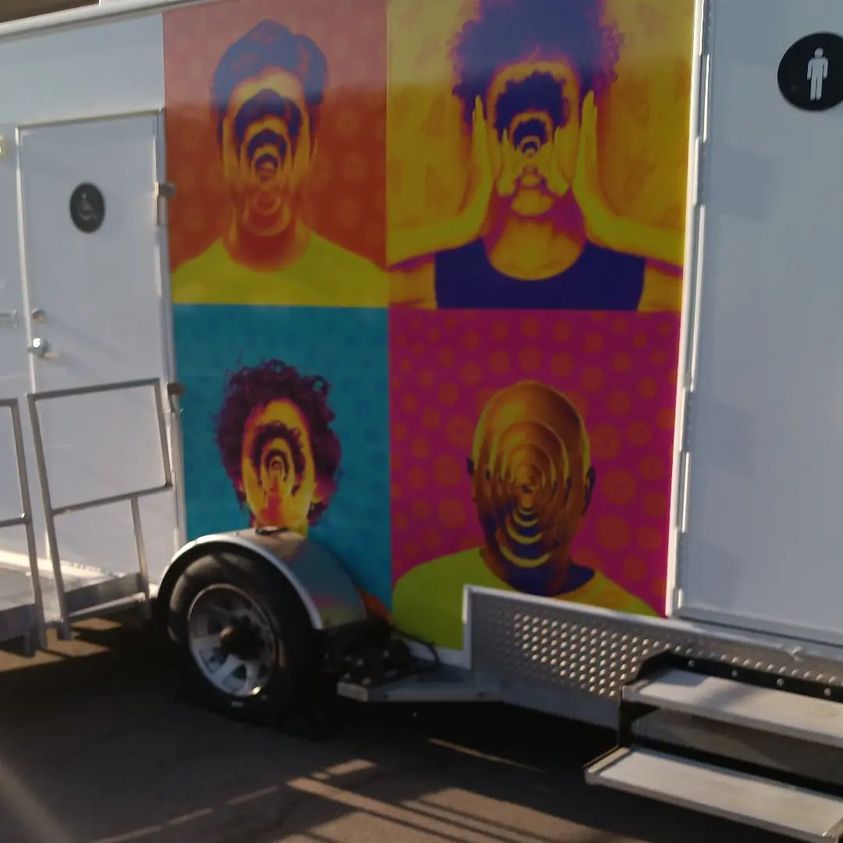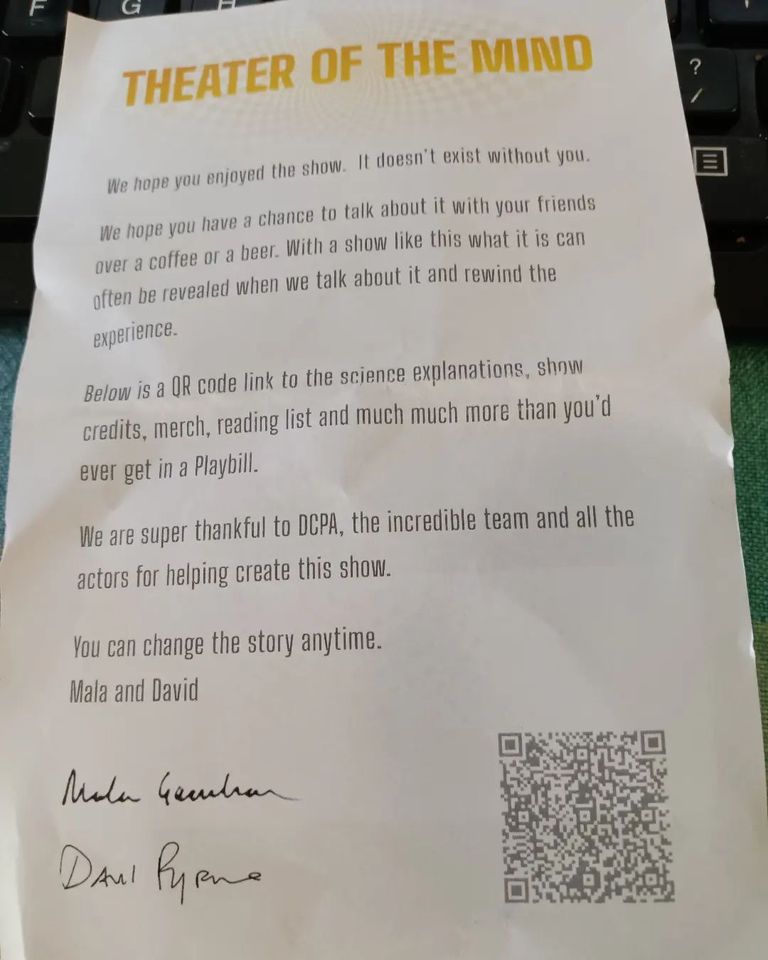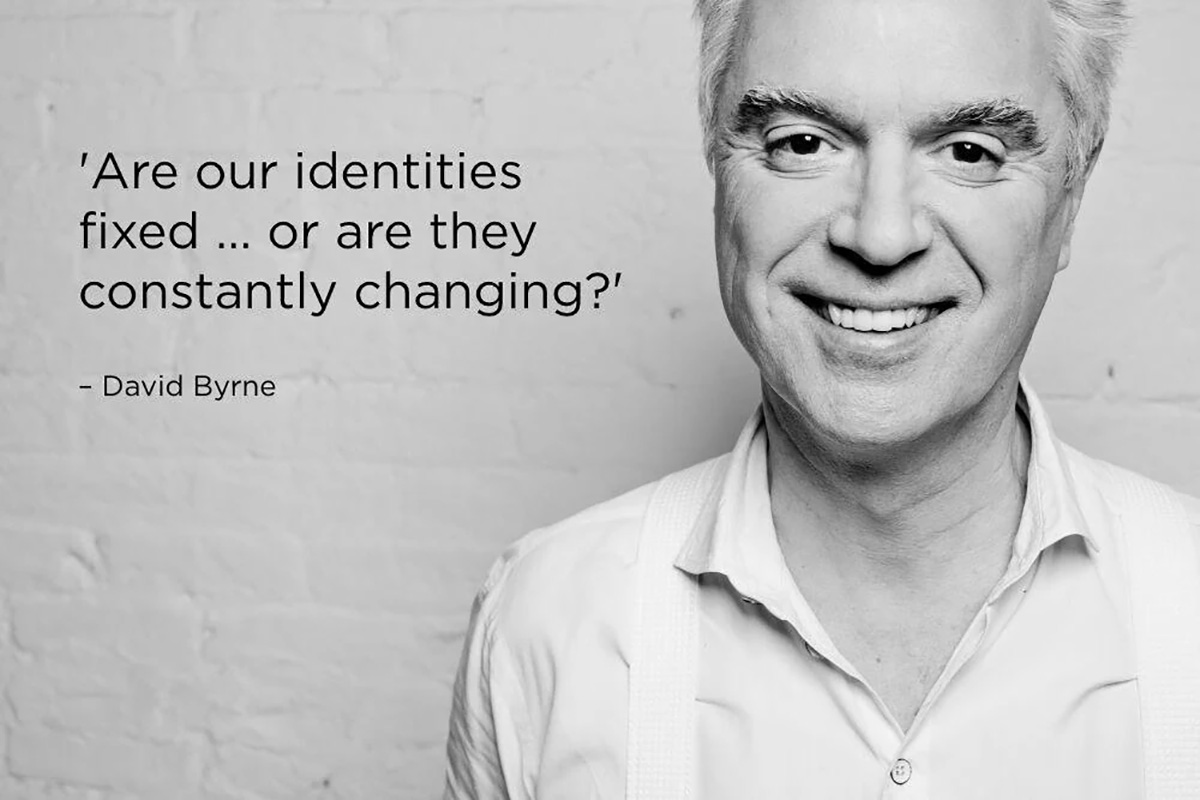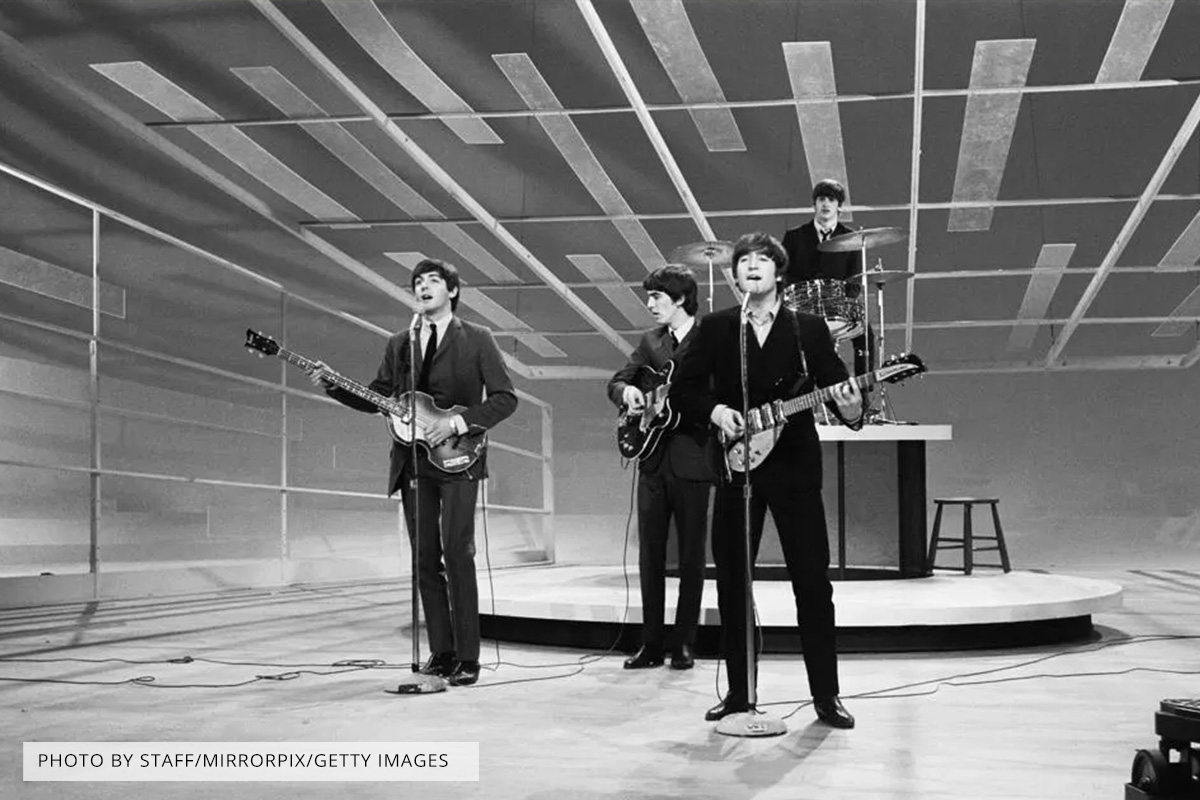©2022 By Zack Kopp
I went to a preview of David Byrne and Mala Gaonkar’s Theater of the Mind, inspired by both historical and current neurological lab research, in a warehouse in Northeast Denver last night. Official shows begin next week, but a friend of mine got me a ticket, and what follows is my review of the experience. No doubt there are things I’ve forgotten to mention, like the Scottish interlude of traffic changes so gradual they go unnoticed until the guide hits rewind, the whole production having been designed to illustrate the unreliability of the senses we go by, but not many.
After we parked and were approaching the entrance, we saw Anwar Cato, guitarist for Denver punk band Little Fyodor drive past, and shouted after his car but he didn’t hear. Guests were asked to remove their hats and cell phones and any other electronic machinery likely to make a noise and stow them in lockers at the exhibit’s entrance. The tour of rooms mapping the human memory began with a tiny house on a pedestal, bringing to mind Byrne’s track, “Tiny Town”. Guests were made to select nametags with names other than their own. I got “Pat.” I didn’t like that name at first, it seemed too tame—others got ones like “Fareed” or “Shonda”, but I was too slow.
We went through a door in the wall to a room made to resemble a funeral parlor. We were asked to read cards provided for our fake names, but I bashed my head against someone’s back inadvertently while looking for a chair marked “Pat’ and a plastic string under one lens snapped loose, so I was especially disoriented. “Excuse me,” I said, forgetting to read my card, let alone pocket it, so I don’t know what it said. An Asian woman in a white suit threw open the lid of a coffin and sat up screaming, then climbed out to guide us down a lighted hallway. This woman was one of a crew of several actors, calling themselves “David” and leading groups of people on continual tours of the rooms. David Byrne’s dislocated audio narration accompanied the guide’s in-person interaction with guests throughout. She kept asking us questions, addressing us by the fake names, as if we were intimates, like, “That was always your favorite song, wasn’t it, Pat?”
Some Brazilian sounding disco was playing. “Never heard it before, but I like it.”
“Oh, Pat,” she chided. This gave me the impression the names we’d been given were inspired by actual people in Byrne’s and Gaonkar’s lives, which is a strange new style, combined with instructive dialogue about the senses’ unreliability. I might have lost the order slightly but there was one room where she asked everyone if they could be the same person or not without all their memories. I was the only one on the fence about that, thinking maybe our point of perception is more who we are, more than just our personal history, and stood in the center of the room while everyone else stood against the walls or in the spots of light, but nothing came of it.
She led us into the inside of an oversized kitchen, how the six-year-old Byrne would have seen it, and here we got the beginnings of a history of his parents, how his father refused to bribe anyone to get ahead in business (made me think of the Talking Heads song “Mr. Jones”) and was resented by the child-Byrne as a goody-two-shoes. The guide opened one of the cabinets and removed a ventriloquist’s dummy of the child-Byrne, engaging in real time with Byrne’s prerecorded voice about being an older version of himself, and whether or not they were the same person. I touched my face and wondered if I might be bleeding before identifying the string dangling against my cheek, but the lens stayed in.

One room was a hot pink replica of the inside of a human skull, ostensibly the guide’s. The lights in this room were lowered to total darkness, which looked dark green to me after all the hot pink. Guests sat along the room’s walls on stools built into the floor. The guide asked “Has anyone here ever hallucinated?” and a few people said yes. “And did it feel real to you?” A woman’s voice answered, “Oh yeah, I can feel the water.” Has anyone else here hallucinated water?” A few people said they had. I thought of saying something but didn’t do it. A friend of mine told a story of feeling like a beam of light had shot through him once in a haunted dorm room in Boston. “Yes, Boston’s old,” said our guide. “There are probably a lot of ghosts.” Each stool had a mirror on top of it, and the guide led us through some visual games, like holding your hand in front of your face in total darkness for a few minutes before flashing a light for a second, causing the seen hand’s enlargement when guests extended their arms. Similar games were played with the mirror vs. participants’ reflections. I’ve got bad eyes and I don’t think the effects were quite as psychedelic in my case, to judge from the enthusiastic moans of amazement others made in response.
Possibly after another hallway, we entered a room made up to look like a disco called Cerebro, and the guide got us dancing. I think it was here that she demonstrated that the room’s checkerboard tiles were in fact the same color and had somehow been juxtaposed to create the black and white effect. I don’t understand the physics involved, but this was indeed the case. The tour beginning in a funeral parlor plus some of the things his voice said gave me the impression the whole exhibit was in some way Byrne’s final testament, but the tone changed when we entered the next room. It was a cluttered attic full of David’s mom’s weird paintings, some of which I swear I’ve seen somewhere, most likely on a Talking Heads or Byrne solo album, if it’s really her work. “I wish I had seen that in her.” said David Byrne’s voice. Despite her having run away and left him with his goody two shoes father, who he now saw as a hero of integrity.
Next we entered a green backyard with a white picket fence, more tiny town vibes, and were instructed to throw washers into a tub in the room’s center. After we did that for a few minutes we were asked to put on plastic goggles that distorted our spatial perspective and keep throwing the washers. People were amazed at their inability to get them in the bucket while wearing the plastic goggles. I only got it in there once while wearing those goggles, and that was overhand. The guide reminded everyone how unreliable their senses were and congratulated them on being able to get the washers into the bucket even with the goggles on, saying something like, “If I can overcome that, what else can I overcome?”
Guests were asked to eat lemon slices after dissolving sweetener on their tongues. The intended effect was for the guests to taste lemonade, but the timing was off in my case. I mean it didn’t taste bad, but it wasn’t lemonade. I think it might have been here that Byrne’s track “Theater of the Mind” started playing.
We entered a room with seats equipped with virtual reality headsets of some kind and fitted with “torpedo-triggers” by Byrne’s dad to amuse him, little black knobs on the ends of the arms. When you donned the visor, you were shown a drawing of the inside of the child David Byrne’s bedroom, from his perspective while sitting in one of those chairs with the triggers. Or it looked like a drawing, until a normal-sized video representation of our guide was shown crouching in that tiny room, another illustration of the unreliability of one’s senses. Seeing her on video prerecorded like that made me respect her more somehow. “Thank you for coming to my funeral, Pat,” she told me on the way out. “Thanks for having me. It was an honor.” When I got home, I logged in to Facebook to find Anwar Cato had posted a photo of himself with David Byrne taken that night at the Mercury Café. I hadn’t known about this, but Byrne had just arrived in town to inaugurate the exhibit, perhaps accompanied by Gaonkar. I’d give you my opinion of the show but I learned that my senses are too unreliable.

999
©2022 by Zack Kopp








